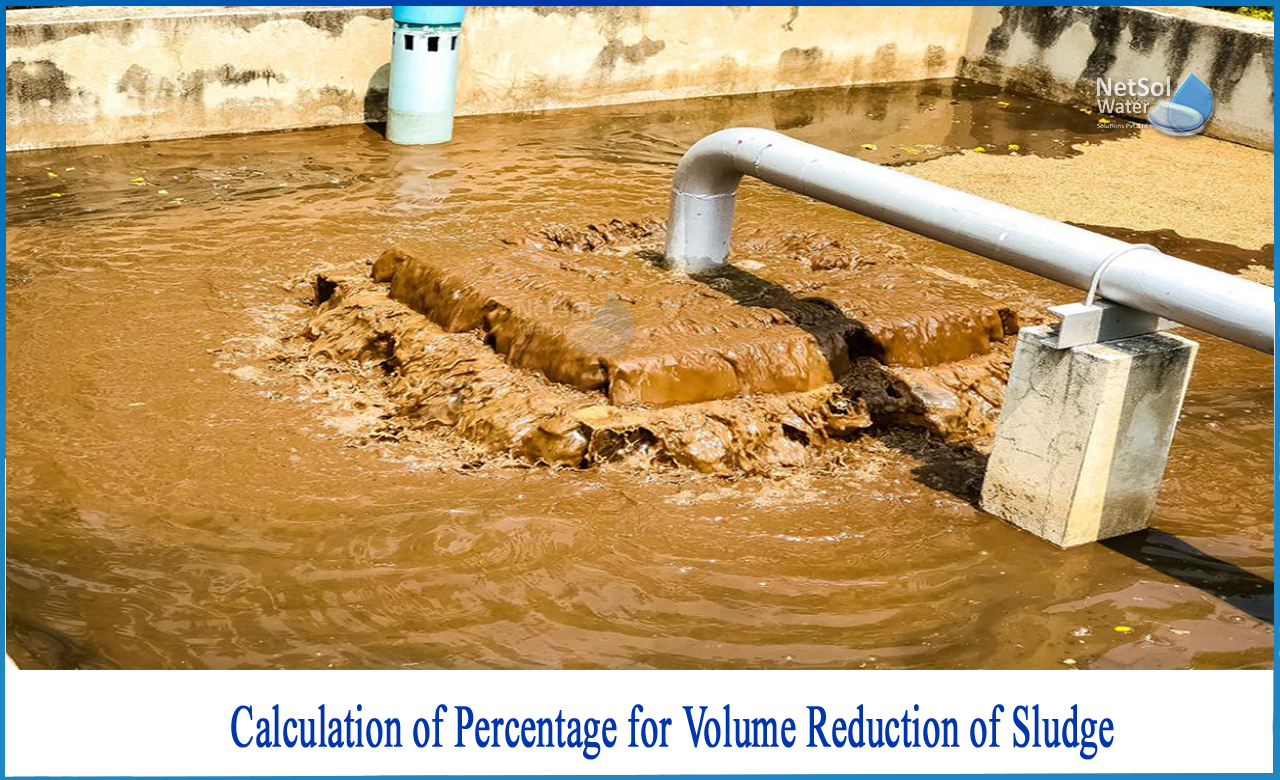Overview
There are two end products obtained from various wastewater treatment plants: effluent and sludge.
The volume of sludge generated in a WWTP is only approximately 1% of the volume of influent wastewater to be treated in which the dewatered sludge is 0.5. To effectively and efficiently operate WWTPs, waste sludge, comprising inert materials and surplus biomass, must be extracted in order to prevent their accumulating inside the system.
What is sludge?
Sludge is a mixture of bacteria and biomass that develops by using the vast amount of energy present in wastewater. Sludge produced from wastewater treatment processes is usually in form of a liquid or semi-solid which typically contains 0.25 to 12% solids. In wastewater treatment systems, sludge takes up space and must be removed on a regular basis, increasing operational costs and complexity.
How to calculate percentage for Volume Reduction of Sludge?
The compositions of sewage sludge varies depending on the composition of wastewater and the processes used for its treatment. Irrespective of its origins, sludge contains water, organic and inorganic materials and suspended solids. Sludge of different qualities are produced from different biological unit operations.
A key sludge quality parameter is its % dry solids (%DS) content. The percentage dry solids reflects the extent to which the sludge can be consolidated. The sludge volume decreases with decreasing water and correspondingly increasing DS content, in the absence of any biological degradation of the solids.
The second key sludge quality parameter is the degradable organic matter content, usually expressed as the chemical oxygen demand (COD). The essential element of sludge treatment is the reduction of its volume by reducing the water content.
Need for sludge reduction
The growing volume of sludge generated by water/wastewater treatment, in line with population growth and urban sprawl, is a major source of concern for local governments and operators.
Sludge treatment has become necessary in order to reduce volume and transform it into recoverable products. To improve costs and disposal options, a variety of processes are required to remove potential health risks, remove water, and reduce the volume and weight of sludge.
The solid content in the sludge is a function of fixed and volatile soils. The specific gravity of all the solid matter can be computed from the following expression:
Ms/Sspw = Mf/Sfpw+ Mv/Svpw
Where,
Ms = Mass of solids, kg
Ss = Overall specific gravity of solids,
![]() w = Density of water, kg/m3
w = Density of water, kg/m3
Mf = Mass of fixed solids, kg
Sf = Specific gravity of fixed solids,
Mv = Mass of volatile solids,
Sv = Specific gravity of volatile solids.
Volume of sludge can be computed using:
Vsl = Ms/pwSslPs
Where,
Vsl = Volume of sludge, m3
Ms = Weight of dry solids, kg
![]() w = Density of water, kg/m3
w = Density of water, kg/m3
Ssl = Specific gravity of sludge,
Ps = Percent soils expressed as a decimal.
What can we offer?
Netsol Water is one of India's major water and wastewater management company, specialized in the design, manufacture, and delivery of custom-made treatment systems, industrial machinery, and luxury amenities for the water industry.
Netsol Water is Greater Noida-based leading water & wastewater treatment plant manufacturer. We are industry's most demanding company based on client review and work quality. We are known as best commercial RO plant manufacturers, industrial RO plant manufacturer, sewage treatment plant manufacturer, Water Softener Plant Manufacturers and effluent treatment plant manufacturers. Apart from this 24x7 customer support is our USP. Call on +91-9650608473, or write us at enquiry@netsolwater.com for any support, inquiry or product-purchase related query.



